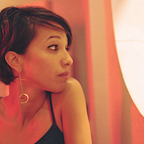On September 16, Mahsa Amini died three days after being arrested and detained by Iran’s “morality police”. The death of the 22-year-old woman has sparked ongoing protests and demonstrations across the country that have since spread across the world.
Under Iran’s Islamic (sharia) law imposed after the 1979 revolution, it is mandatory for all women to wear hijabs and conservative, loose-fitting clothing that disguises the female figure. The “morality police” enforce the compulsory dress, and arrest or fine women who violate the country’s law, which must be followed by all women regardless of nationality or religion when in public. Amini was arrested for violating these laws, upon which she was taken to a detention centre where she received “training” on legal hijab dress.
Iranian authorities claim she died of a heart attack; while so far not permitted to see her body, witnesses and her family dispute that security forces beat Amini to death. Reports from the Associated Press indicate that her death was caused by “a fracture on her skull due to heavy blows to the head”.
Widespread international protests against the police, the regime and sharia law in defence of women’s rights have since taken place. Protests outside the Iranian Embassy in London on Sunday spread across the capital, and in some instances, clashes were seen between the police and protestors. A statement released by the Met Police said at least 5 officers had been injured, and 12 people were arrested on suspicion of “violent disorder”.
Headlines Monday morning ran with the number of police officers injured, and mislead readers by calling these protests “anti-Iran” or “anti-Islam”, of which they are neither. (Notably, when protests took place in support of Ukraine, headlines ran the numbers of people who took to the streets.) This is a wildly misconstrued narrative — the people of Iran are fighting for Iran, for the basic rights of women, for women’s freedom of choice, for an end to torture and rape under arrest or wrongful imprisonment, for freedom of speech. These ought to be values we, as Western nations, all rally behind — and yet perhaps they are only supported when we are about to lose them, or the people who are threatened look “just like us”.
And so, Western media coverage of the protests has, in devastatingly predictable style, fallen into two camps: those who see the bigger picture, and, in the majority, those who don’t get it at all. I surmise there are three reasons for the latter: Iran’s geopolitically fraught relationship with the West; misconceptions about the Middle East in general; and unarguably, racial bias.
The Middle East and its surrounding regions are a notoriously complex web of complicated regimes, different cultures, ideologies, social complexities, hierarchies, traditions and religions. Internationally covered cross-country wars are often accompanied by shadow civil wars; conflicts regularly arise between the public and politicians, politicians and the police, public and the police, men and women, Sunni and Shi’a, East and West, North and South.
I previously wrote about how the outpouring of support for Ukraine following Russia’s invasion inadvertently exposed a deep-rooted bias in the way we approach human rights violations and conflict based on race. The same people who never hesitated to donate clothes, volunteer at charities and shelters, open their front doors and spare bedrooms, provide visa sponsorships and protest in the streets have fallen all but silent.
Men and women from a range of backgrounds, genders, religions and sexual orientation have walked with and rallied behind Black Lives Matter, Me Too, Trans Rights are Human Rights, Ukraine… These are all crucial movements that highlight social injustice and support marginalized groups in a world where these divisions and prejudices should no longer exist. Most recently, after Roe v Wade was overturned, the international outcry for autonomy over women’s bodies re-surged with a vengeance.
If you think abortion is a choice that every woman should have because women everywhere should simply have the right to choose, how could you possible argue that the Hijab is a choice — whether to wear one, as in India, or not, as in Iran. But all of these movements of solidarity are warped through the prism of regional and ethnic disregard to become “skepticism with Iran”. Where are the rallying cries of these justice warriors, these feminist pioneers, these freedom fighters, now that the people of Iran are being killed at the mercy of outdated, misplaced, patriarchal hands of “morality” as Iranians beg the rest of the world to be their voices as they fall silent, victims to brutality with no way to access the internet and cry for help?
I say it again: there is a hierarchy that subjects social justice movements to hypocrisy — and ultimately, undermines them all.
Because on paper, a 22-year-old woman was killed for making a choice. And all these movements have asked for is the freedom to choose and be who you are — and as a woman, particularly, to have the autonomy of choice over your body, what you do with it, and how you dress it.
Women everywhere are now losing freedoms, and fighting against unforeseen powers to simply exist with control over their own being — but when these women live in a country that is deliberately malportrayed by Western political interests or is home to a religious culture that has always been at the heart of their defence for “wars on terror”, the fight for women’s rights completely disappears behind the abhorrent veil of racism.
And yet again, women are losing their voice.
#mahsaamani
